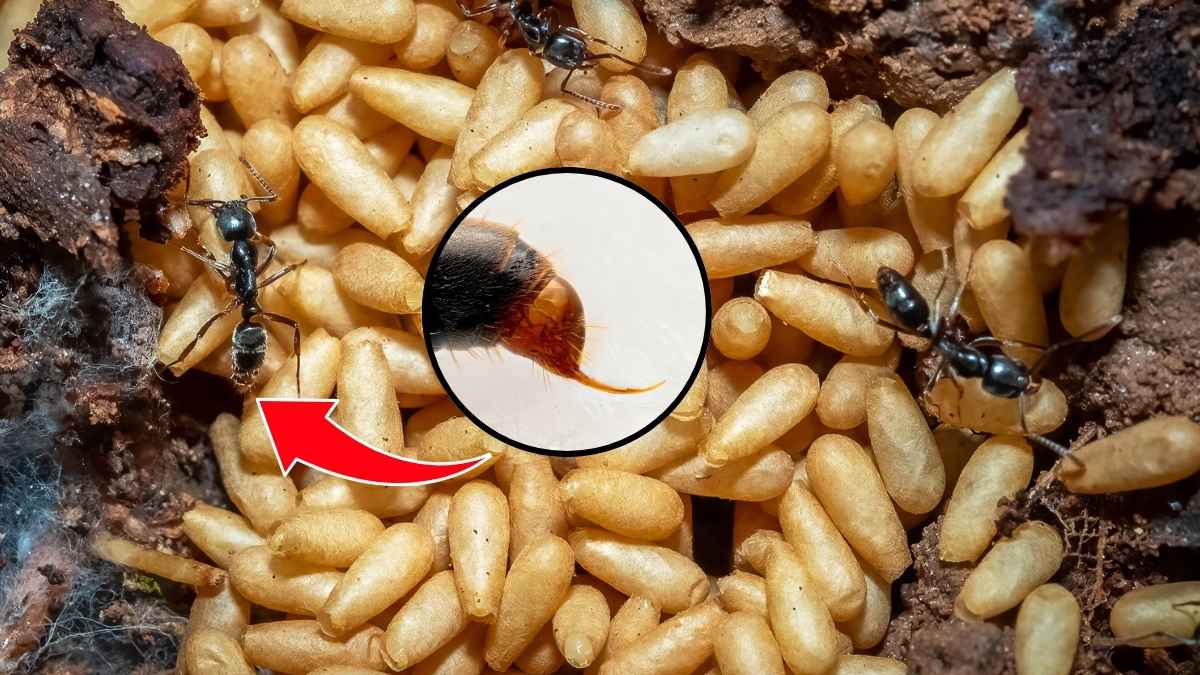Asian needle ants, while small in size, are rapidly becoming a dangerous and invasive presence across the United States. As summer approaches and more people head outdoors, the chances of encountering these ants grow, especially in July and August. Despite their tiny stature, their sting and their environmental impacts make them a serious threat. Keep reading to understand why these ants are something to watch out for.
Asian needle ants are native to East Asia, including China, Japan, and the Koreas. They are dark brown and often blend in with soil, mulch, and rotting wood, making them easy to overlook. Unlike many other ant species, Asian needle ants don’t leave scent trails, making them harder to track.
These ants were first discovered in Georgia in 1932, and since then, they have expanded their range, now found as far north as Connecticut and as far south as Florida. They typically reside in humid, forested areas with hardwood trees and often nest in areas like leaf litter, rotting logs, firewood, and residential gardens.
Where are Asian needle ants found in the United States?
Asian needle ants have spread across the eastern United States. You are most likely to encounter them in:
- Humid, forested areas with hardwood trees.
- Residential yards, under wood piles, bricks, pavers, and in potted plants.
- Urban and suburban areas with a lot of mulch and rotting wood.
According to entomologist Theresa Dellinger, “People are most often stung when they’re working in their garden,” a place where these ants thrive. Asian needle ants aren’t just an inconvenience for gardeners; they are causing serious disruption to the local ecosystem. Over the last 20 years, research has shown that these ants are reducing the diversity of native ants in areas they occupy. This, in turn, impacts plant life, as many native ants are responsible for seed dispersal.
In areas where Asian needle ants have invaded, there have been significant declines in seed dispersal by native ants. This could have long-term effects on forest ecosystems, as plants rely on ants to move their seeds away from the parent plant.
Why their sting is dangerous? Unlike many other ant species, the sting of the Asian needle ant is especially painful. Benoit Guénard, an entomology professor, compares the sting to “somebody inserting a needle directly into your flesh.” The pain is sharp and intense and can return after several minutes, making it more than just a brief nuisance.
While most stings are localized, some people can experience severe allergic reactions, including anaphylactic shock. Around 1% of people stung by these ants may go into anaphylaxis, a life-threatening condition. In 2024, at least three cases of severe allergic reactions were reported in Georgia alone.
How to protect yourself from the Asian needle ant
To avoid getting stung by these invasive ants, consider the following precautions:
- Wear gloves and long sleeves when gardening or working outdoors in areas known to have these ants.
- Be cautious around wood piles, mulch, and rotting wood, as these are common habitats for the ants.
- Inspect areas for nests before working outdoors to avoid accidental contact.
Key takeaways about Asian needle ants:
| Key Fact | Details |
|---|---|
| Location | Found mainly in the eastern U.S. |
| Dangerous Sting | Causes sharp, intense pain and possible allergic reactions |
| Environmental Threat | Displaces native ant species crucial for seed dispersal |
| Protection Tips | Wear gloves, long sleeves, and avoid areas with mulch or rotting wood |
The Asian needle ant, though small, poses a big threat to both human health and the environment. As they continue to spread across the eastern United States, it’s important to stay informed and take precautions when spending time outdoors. By understanding where these ants live and how to avoid them, you can protect yourself from their painful sting and help preserve the local ecosystem.

